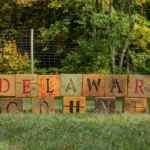When Austin, Texas welcomed the CASE/NAIS (Council for Advancement and Support of Education/National Association of Independent Schools) annual conference in January, we were there and are happy to share a few highlights from the convention about innovations in the nonprofit world:
Lessons from an Endowment Campaign
Many organizations are focusing on endowment fundraising today. Independent schools want to use endowment to address escalating tuition costs, increase financial aid and retain strong faculty. The Latin School of Chicago has embarked on a $50 million campaign, unusual in that it is designed solely to increase their endowment. They employed some novel strategies that involved full financial disclosure and offered their donors a sophisticated “Investment Report” instead of the typical annual report. Their stated slogans, Endowment Is Forever and Endowment Is NOW, resonated with donors. To learn more, go to their website www.Latinschool.org.
They Don’t Give: Myth Busting on Major Gift Constituencies
Most nonprofit organizations want to be more inclusive, building a diverse base of donors and volunteers. As Emmett D. Carson, PhD, CEO and president of Silicon Valley Community Foundation writes in a 2015 study, Diversity in Giving: The Changing Landscape of American Philanthropy, “…fundraising in the 21st century will require a differentiated approach tailored to the interests, values, and traditions of the many rather than a one-size-fits-all approach.” Newark Academy (NJ) is reaching out to parents from different ethnic groups who had been less represented on their donor lists, opening conversations about philanthropy in different cultures. Communicating with tact and honesty is building a stronger community and engaging new major donors who support the Academy.
Wall Street 101
Private equity, hedge funds, quant strategies—if your potential donors’ businesses seem inscrutable, it can be tough to figure out how to cultivate or solicit them. The Peddie School (NJ) asked its investment advisor, Monticello Associates, for a tutorial on how Wall Street operates. Knowing what funds to watch and understanding the high stakes in the financial services industry led the School to this succinct advice: Do your homework, be crisp in your presentation and demonstrate the lasting value of your mission (education, health care, etc.).
The Need for Strategic Agility
Kathy Pearson, PhD, Wharton School, a remarkable speaker and professor who is in demand as a consultant for businesses all over the world, taught us how to identify uncertainties and spot trends in order to become adaptable and flexible in our planning. In the short term, analytics will be helpful, but for long-term success we need to track uncertainties, look for disruption and learn to strategically manage the uncertainties we identify.
What are the indicators of change in your organization’s community and how will you manage them?




